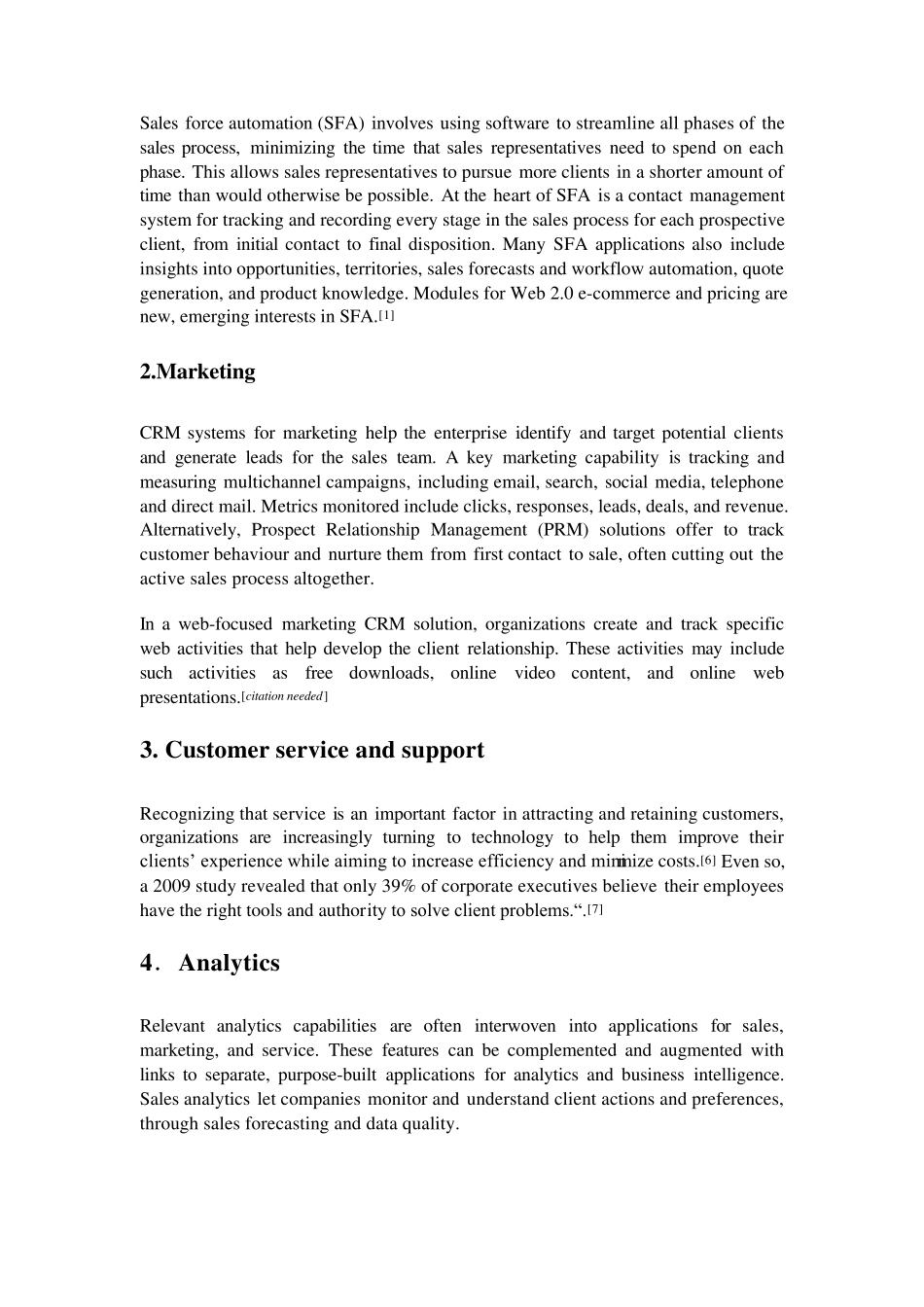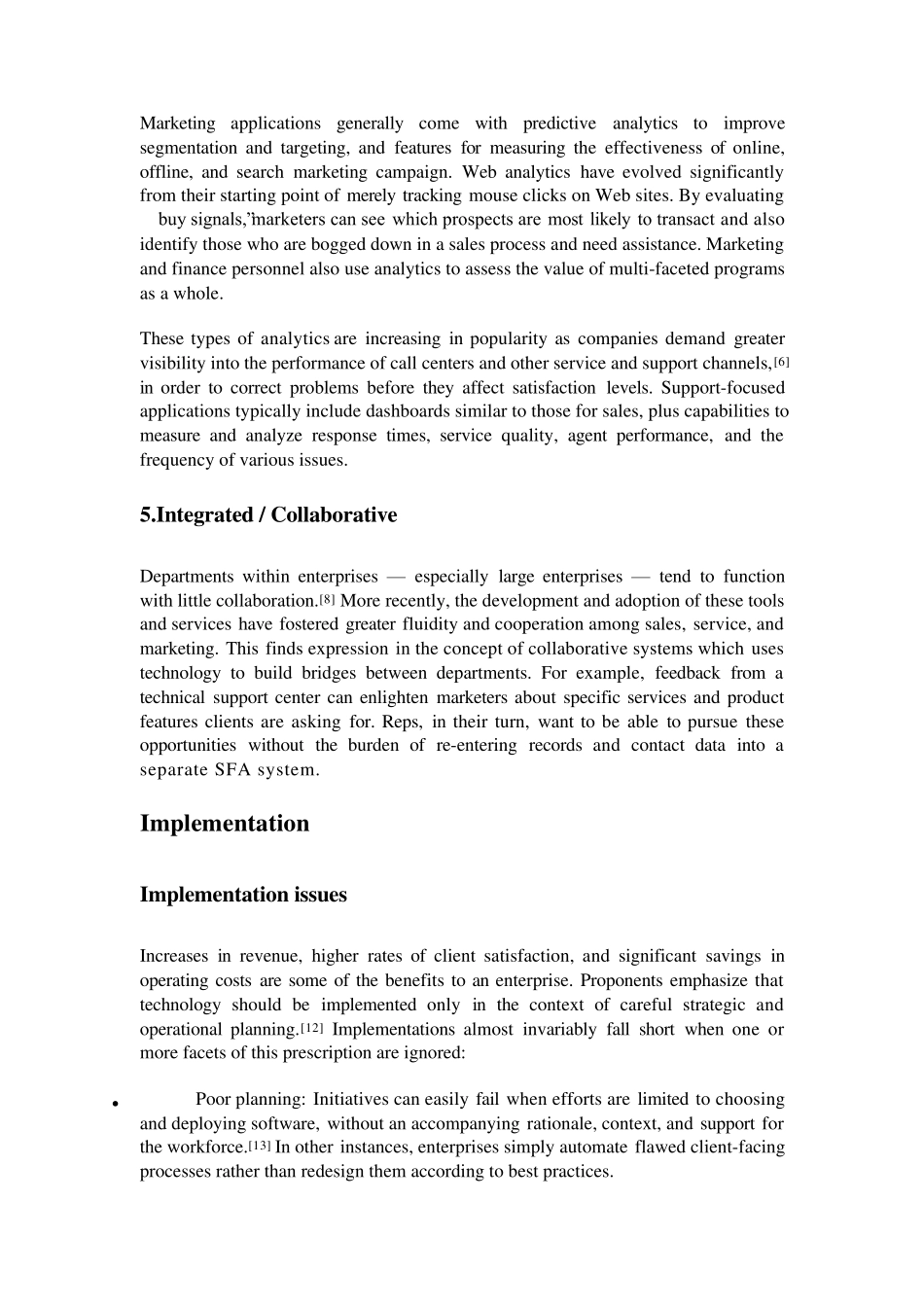原文: Customer relationship management Customer relationship management (CRM) is a widely-implemented strategy for managing a company’s interactions with customers, clients and sales prospects. It involves using technology to organize, automate, and synchronize business processes— principally sales activities, but also those for marketing, customer service, and technical support. The overall goals are to find, attract, and win new clients, nurture and retain those the company already has, entice former clients back into the fold, and reduce the costs of marketing and client service. Customer relationship management describes a company-wide business strategy including customer-interface departments as well as other departments. Challenges Tools and workflows can be complex, especially for large businesses. Previously these tools were generally limited to contact management: monitoring and recording interactions and communications. Software solutions then expanded to embrace deal tracking, territories, opportunities, and at the sales pipeline itself. Next came the advent of tools for other client-interface business functions, as described below. These tools have been, and still are, offered as on-premises software that companies purchase and run on their own IT infrastructure. Often, implementations are fragmented— isolated initiatives by individual departments to address their own needs. Systems that start disunited usually stay that way: siloed thinking and decision processes frequently lead to separate and incompatible systems, and dysfunctional processes. Business reputation has become a growing challenge. The outcome of internal fragmentation that is observed and commented upon by customers is now visible to the rest of t...


